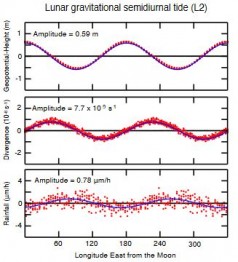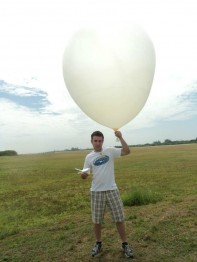A University of Washington seismologist is participating in a White House summit Tuesday that will focus on national earthquake preparedness. The event will be webcast live from 9:30 a.m. to 1:15 p.m. Pacific time. Sally Jewell, secretary of the Department of the Interior, and John Holdren, director of the White House Office of Science and Technology Policy, are scheduled to give the introductory remarks.
Read more at UW Today »Moon’s tidal forces affect amount of rainfall on Earth
When the moon is high in the sky, it creates bulges in the planet’s atmosphere that creates imperceptible changes in the amount of rain that falls below. New University of Washington research to be published in Geophysical Research Letters shows that the lunar forces affect the amount of rain – though very slightly. “As far as I know, this is the first study to convincingly connect the tidal force of the moon with rainfall,” said corresponding author Tubas Kohyama, a UW doctoral student in the Department of Atmospheric Sciences.
Read more at UW Today »Earthquake Authority: Q&A with UW's John Vidale
Alongside fellow experts, UW professor John Vidale is working toward making the earthquake-prone Pacific Northwest a safer place. Vidale answers some of our most pressing questions.
Read more at Washington.edu »Jeffrey Cordell honored by the Seattle Aquarium
Every year, the Seattle Aquarium recognizes outstanding individuals who work and make a difference in the marine environment. This year, UW School of Aquatic and Fishery Sciences research scientist Jeffrey Cordell was honored for his innovative work on restoring marine habitat along Seattle’s Elliott Bay seawall. Jeff led the long-term research, funded by the City of Seattle and Washington Sea Grant, to design, install, and monitor large-scale test panels at three locations along the Seattle waterfront as part of the Elliott Bay Seawall Project.
Read more »Mathematical model explains huge recurring rainstorms in the tropical Indian and Pacific oceans
El Niño is fairly well understood, and by now it’s a household word. But another huge system in the tropical Indian and Pacific oceans, which wreaks similar havoc in world weather, is relatively unknown and is just beginning to be explained. University of Washington scientists have published a mathematical model that could help explain and forecast the Madden-Julian Oscillation, a massive cluster of thunderstorms that plays a role in global weather.
Read more at UW Today »





